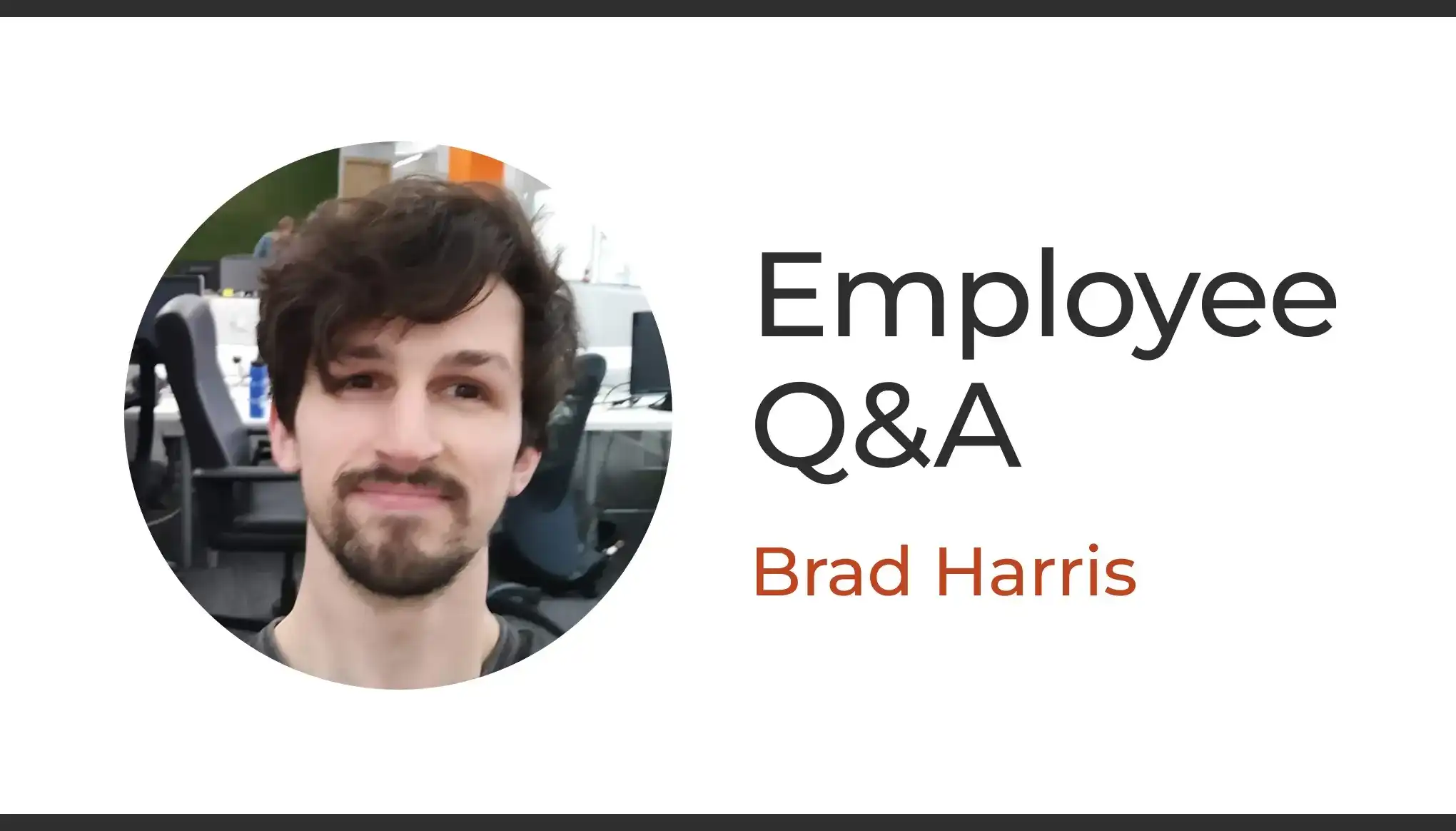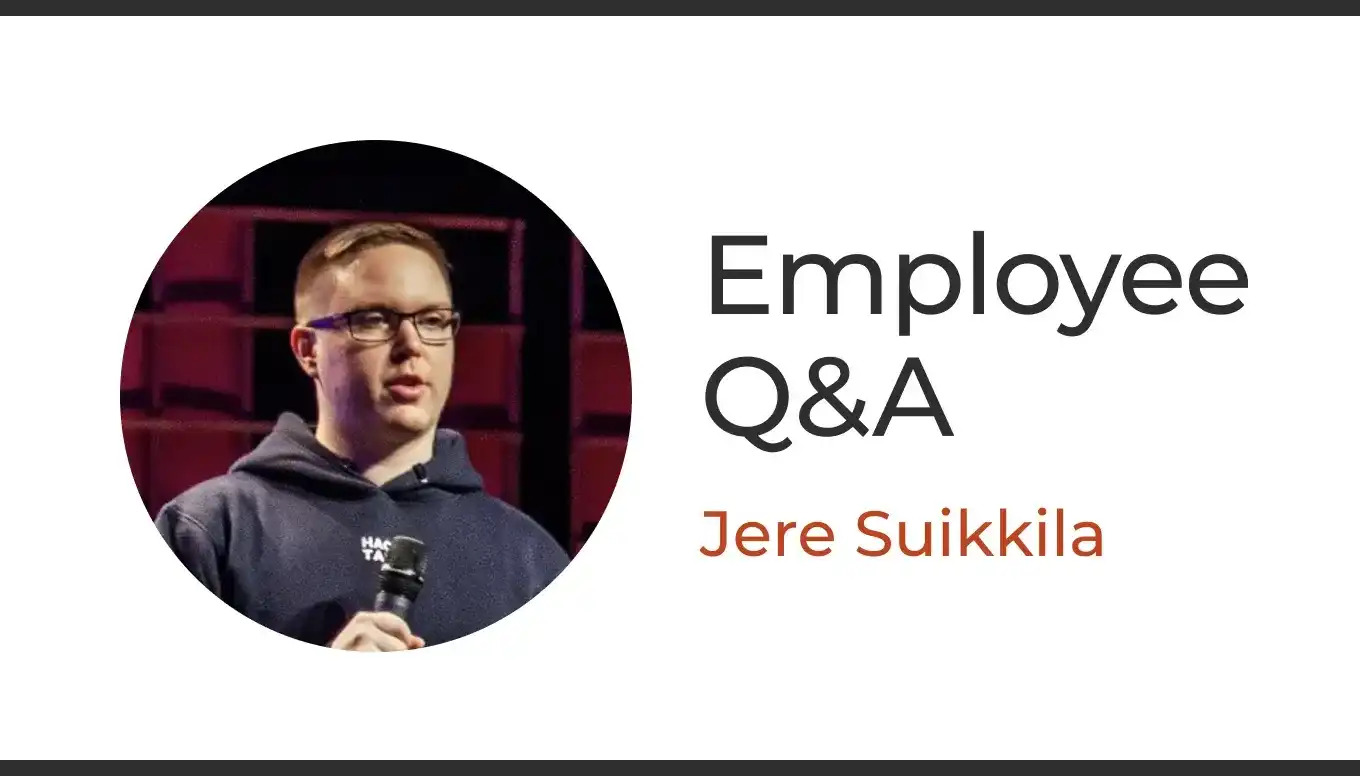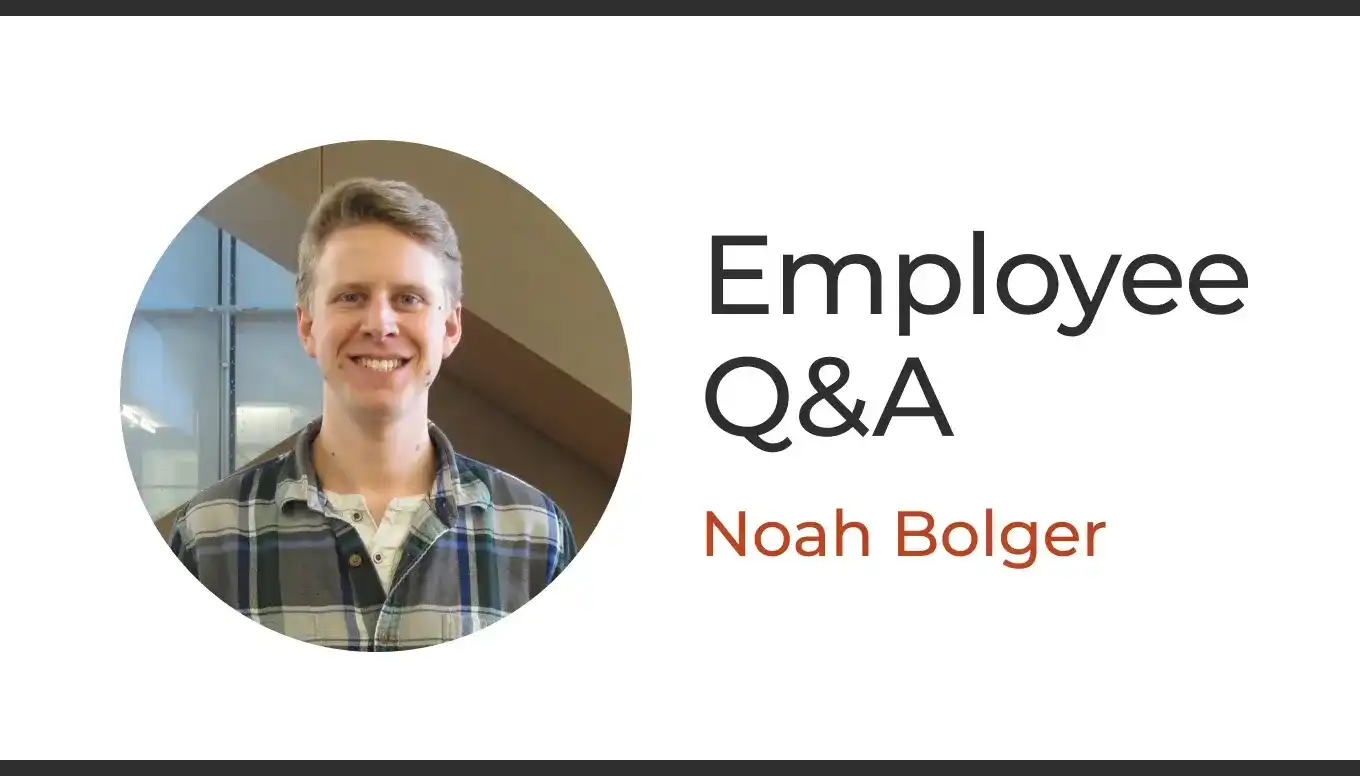Paul is Mappedin’s Director of Engineering. We’re discussing his journey at Mappedin, some cool things the Engineering team is working on, and the hiring process for a software developer.
Paul, thank you for chatting with me. To start off, can you tell us about your current role at Mappedin?
I’m the Director of Engineering at Mappedin. I run the Product and Platform team, which contains a number of different teams that work on things like our pre-built applications, SDKs, DevOps, and Machine Learning.
I spend most of my day doing what I can to make everyone who ultimately reports to me as effective as they can be. That means helping them solve business and technical problems, and ensuring they have what they need to grow, be happy, and successful. This sometimes involves getting my hands dirty to build or fix something that would otherwise fall through the cracks. I also do a lot of hiring, and have a number of security related responsibilities as part of our SOC 2 policy.
You’ve been at Mappedin for almost 6 years now, congratulations! How has your journey been and what are some of the different roles that you’ve had along the way?
Thanks Lucy! When I first joined Mappedin, the Development team was really small, consisting of maybe around 10 people, and I was our first Developer Evangelist. Prior to that, the role was spread out between the rest of the Dev team. As an individual contributor, I was able to jump in and make a big contribution by building our Web SDK; which is now a core part of our product. Mappedin was having a lot of success and started getting a lot bigger, and eventually the Dev team split up into two teams: the Consumer team and the Enterprise team. Mappedin’s CTO, Ed Wei, asked if I wanted to be a Dev Manager and take over the Consumer team, and I said yes. That went really well, and the team continued to grow and separate into several other teams; all of which I had managed at one point or another. Then at the start of the year, I was promoted to the Director of Engineering, which is where I am today. Mappedin gave me a lot of opportunities to grow and try different things, so it’s been an enjoyable journey.
That’s great to hear! Is there one thing that you like the most about working at Mappedin or in your role specifically?
What I enjoy most is that everyone is really fun to work with, there’s always meaningful work to be done, and a variety of challenging tasks to accomplish. I enjoy managing people and teams, helping people solve problems, and ultimately helping people be successful. The company is well connected and something that has always impressed me about Mappedin is our company values. Not because of the values alone, but because of how they came about and how we use them.
As we were getting bigger, we realized that we have a great company and culture, we’re very successful at what we do, and people like working with us, so why is that? We started to write those things down so that we could continue doing what we were already doing: playing for the team, focusing on customers, being honest & accountable, and learning fast. It’s the kind of attitude where people help each other out, always try to get better, are willing to go the extra mile when needed to get something done, and feel empowered to make things better for their team, company, and our customers. The values that we’ve come to embody and cherish are ones that enable our company to perform well together, and that’s something I really enjoy about Mappedin.
What are some of the cool things the Engineering team is working on?
From my perspective, probably the coolest thing we’re working on right now is the First Responders Project. In every municipality, first responders struggle to maintain pre-incident floor plans for a significant portion of the city, leading to poor situational awareness in emergency response situations. When firefighters get a call, they often don’t know what is going on inside a building, and the floor plans they receive are outdated or in weird formats. Mappedin’s proposed solution will automate the conversion of existing scanned floor plans, which every first responder organization or city permit office has, into simplified, standardized maps. On top of that, we’re creating a situational awareness dashboard for tablets that enables first responders to tag certain areas on the map with icons. This can include the location of the fire, exits and entrances, fire extinguishers, and all other important information. This solution ensures that emergency services always have the most up-to-date information on hand.
Mappedin hosts 3-day hackathons once every quarter, could you tell us more about that? What is the goal of Hackedin?
For as long as I’ve been at Mappedin, we’ve had Hackedin, which is our internal hackathon event. It used to happen one day every month; however, we decided to change the format to a three-day-long event that occurs every couple of months. The idea has always been to give developers the opportunity to work on something they’re interested in, outside the scope of their regular sprint work. This could be experimenting with new technologies, or features that you think would be awesome if they existed, or trying something you’ve always wanted to do. Afterwards, everyone gets together for a meeting to present what they’ve built, and we often get really cool things out of it.
We’re hiring for many engineering roles currently at Mappedin. What are these roles and why should a developer come to Mappedin right now?
We’re currently hiring for a team lead, a front end developer, and a full stack developer (see our open roles here). I’d say that a developer should come to Mappedin because we’re a really great company to work for. We have a really positive culture, and everyone is friendly and fun to work with. We try really hard to support our developers and give them opportunities for professional growth, in terms of taking on bigger and harder challenges, as well as growing into roles they’re interested in. A question I often ask people that report to me is “what do you want to be able to do in a year that you can’t do now?”. People might say they want to get better at back end development, try some DevOps, or maybe get some leadership experience, and we want to help them reach that goal and be successful. Overall, Mappedin is a great place for developers to learn and grow, and have fun while doing that.
What is the hiring process like for a software developer?
For a software developer, there are a couple of stages and we try to move through these stages very quickly. The first stage is conducted by our People Operations team who reviews your application to see if you’re lined up with what we’re looking for. If you are, you’ll have a simple phone screening which consists of some basic questions to see if you’re aligned with the role and this is something you’re interested in. Then you move onto a short technical phone screen either with me or one of the leads that report to me. This will be a simple technical question we go through with you, it’s not meant to be a trick question or anything, it just goes over some of the things you’d be doing everyday as a developer.
If you’re successful there, there are two interviews that can happen after that, depending on the role. There’s one where you’ll meet with the hiring manager and myself to go through your previous roles and employment history. Then the other one is a more in-depth technical interview where you’ll meet with two members of the team you’d be working on, and will be asked more role specific questions. If you’re successful with those steps and everything prior, the next step would be to meet with Ed, our CTO, and Hongwei, our CEO.
Do you have any interview tips for a developer who wants to apply to Mappedin?
Yes. I’d say brush up a bit on the technologies we are going to be talking about in the interview. It will depend on the role, but you can absolutely ask, we don’t want to trick you! There may be some React, Javascript, or some back end stuff. Another tip would be to ask questions. The interview isn’t a test where you have to answer the question completely on your own, you can certainly ask questions and clarify. You don’t have to have every function memorized or anything like that, we can tell you. After all, half of being a developer is knowing the right questions to type in Google! Lastly, remember that you’re interviewing us at the same time that we’re interviewing you. It’s important for you to know what you want and make sure that Mappedin is the right fit for you.
Interested in working with us? Check out our Careers page for all open roles, or send an email to our recruitment team at careers@mappedin.ca.
Tagged In
Share


